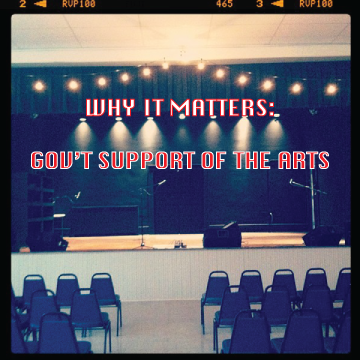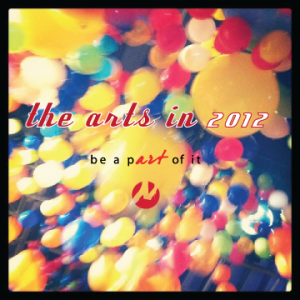
Nowadays even these things seem rare...
Where Did the Music Go?
BY GEORGE PATRICK MCLEER
You may not know this about me, but there are few things I enjoy more than getting new music. For me, there is a process. Buy the CD, open it, stick it in my car’s CD player, flip through the CD artwork and then proceed to drive off in a musical haze with the stereo turned up and the windows down. Then when I am home I take the CD, load it on to my computer/iPod/iPhone/iPad and proceed to blast the new music from one of the many speaker systems we have at my house (I’ve got a roommate who is a DJ, another who plays guitar/keyboard, another that sells sound/lighting equipment and then I play guitar and manage a music venue…we’ve got a few speakers lying around).
It is perhaps the most common creative routine I have. It is a necessity for me to listen to new music in this solitude in order to really enjoy it.The rush of dopamine in my brain when sound waves hit my ear drum for the first time is just about the best feeling in the world. And since I work with musicians a lot, I have an even better appreciation and understanding of the recording process and the subtleties in the music that makes the experience so much more entertaining.
So today I went to Best Buy to pick up some new tunes. When I notice…there’s practically no music in the entire store.

What I perceived Best Buy's selection to look like. Yes, they have music, but in my mind this is all they had.
See here’s the thing – Best Buy’s music selection over the past 5 years has dwindled down from a good 8-10 aisles to 2. TWO.
Now I had noticed this trend over time – I’ve tried to buy music at Best Buy for the past five years and have seen their selection shrink and almost disappear. But this time it really got to me. I was looking for a specific CD from a not-so-well-known artist, but one that should be on the shelves of a generic music store.
I’m not trying to be extremely negative to Best Buy just because of this one experience – I’ve tried to go and buy many, many albums without success at this store. But Best Buy has taken the entire music industry and reduced it to practically a check-out aisle. Artists in stock do not extend past the Top 40 or well-known classics. But if you’re looking for a wide and deep selection in jazz, country, classical, stand-up comedy, or even artists on the cusp of greatness — you’re out of luck. Now there used to be places that I could easily substitute if Best Buy didn’t meet my needs. In fact, if they didn’t have it, I knew I could find it at Barnes & Noble, who have always had an amazing music selection. But guess what I was slapped in the face with a few months back at my local Barnes & Noble — NO MUSIC/MOVIE SECTION. The entire store was switched around, eliminating all music/movies and replacing it with 1/3 of the store dedicated to the Nook.
But Best Buy and Barnes & Noble and other major chains – I get it. Everyone’s going digital. The iPod has killed your music model…or so you think. The trend has always been replacing music mediums with the next, most portable and storage-friendly means possible. But while iTunes and the like have definitely made it easier for people like me to get my music now and on the go – the difference is in the touch. All previous trends have been from one tangible object to another. Regardless of whether it was an LP, a 45, an 8-track, a cassette or a CD, music has always had a tangible aspect. The consumer has been able to not only hear the music, but see it, and smell it (in a sense – that ‘new CD’ smell from packaging). It also offered an opportunity for the artists to express their album through artwork. Remember the Beatle’s Sgt. Peppers…? You could look at that album cover for hours, right?
And I’m not trying to put down iTunes/Apple either. I think the model for music nowadays is in fact going digital and iTunes is pretty much perfect for this. Heck I use iTunes everyday. But what gets lost is the connection with the artist. The satisfaction in knowing that the CD you bought is solely owned by you. That the artist’s voice traveled from their vocal chords through the microphone to a soundboard into a computer and then directly onto the piece of plastic you’re about to put into your stereo system.
The need for CDs is still great. Artists stand to make more money on selling an album at their concert than they do selling it on iTunes. And while the record companies still rob artists blind during the recording and distribution processes, at the very least, artists can have something physical to hand to an audience member or potential fan. Not to mention – you can’t autograph an MP3, but you can autograph a CD.
I understand the switch in these major chains, I really do. But I don’t agree with the almost nonchalant methods that they have practically eliminated their music selections with. There’s a difference between streamlining your models and completely doing away with what once was a major component of your model. Music is also very different than the TVs or cameras these electronic stores sell. Music is more than a product. It has been the backdrop and soundtrack of our nation and of mankind. How else would you explain or experience Frank Sinatra if you couldn’t find a CD anywhere and didn’t have the capabilities of downloading his music? I also don’t understand their shunning of the music industry while at the same time expanding product lines in the movie industry – it is just as easy to watch something on NetFlix or download on iTunes, yet movie selections have seemed to increase. It makes no sense.
I guess what I’m trying to say is that while I will continue to put digital music on my iPod and buy many songs from iTunes, I’ll never get over the need to have something tangible to connect myself with the artist. The work that goes in to producing an album is more than the general public realizes and the CD is the all encompassing result of that work. A digital download, while easier in many regards, enables a relationship between the consumer and the product which plays their songs, and not the song itself.
But today I had to replace my lifelong tradition. Instead I had to go on my iPhone, find the album and download it as I drove angrily back to my office where I promptly burned my own copy of the CD for my car.
Listen Best Buy, if you want me to just bypass your store whenever I want music and go straight to iTunes or find a local record store (which are also closing shop left and right) – I’ll gladly do it, if not only to save myself from the disappointment and wasted gasoline to get to your store and discover you in fact do not have any music on your shelves.
Where did the music go?


